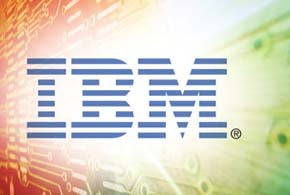ORLANDO, Fla.—While IBM is moving to make it simpler for partners not only to sell a broader range of complementary products, the tech giant is developing a series of services that can only be resold by partners.
At the IBM PartnerWorld 2016 conference here this week, the company announced that beginning in January 2017 it is revamping it channel program with an eye toward more clearly defining the relationship a partner has with IBM, while also putting a common lexicon of terms in place across its channel programs.
For example, instead of referring in some cases to specialization in one program and competencies in another, IBM is standardizing on the term “competencies,” said Mike Gerentine, global vice president for channel marketing. All told, IBM intends to have 44 competencies in place by the beginning of 2017.
“There’s obviously a relationship between Power systems and analytics. But we don’t want to go too crazy with the competencies,” Gerentine said. “In fact, what we’re doing won’t be all that different than what we already have, but it’ll be easier to understand.”
IBM is also putting in place new cloud incentives that last the entire life of the renewal process and adding a program that specifically rewards builders of embedded systems that use IBM technologies.
The most tangible change from a customer-experience perspective for most partners may actually come in the form of new IBM services that can only be resold by channel partners. David Patterson, general manager for infrastructure services in the Global Technology Services unit of IBM, said those services will be aimed primarily at midmarket customers that the IBM direct sales force does not typically engage.
The decision to offer those services comes in the wake of a reorganization of how IBM’s services are delivered in general. IBM services are now organized under what Patterson describes as an enterprise IT-a-a-service framework that with digital business transforms at the highest level and then works its way down to hybrid cloud platforms and infrastructure.
IBM is clearly putting resources into partners that develop intellectual property that pulls IT products and services along. For example, Dan Pompilio, CEO and president of SimpleC, which provides technologically enhanced therapies for people with memory loss, credits IBM with helping develop the company’s cloud application and then helping to take it to market.
“In contrast, Microsoft has a .NET architecture that is a nightmare to work with,” Pompilio said. “And Google limited the amount of data that could be on the client device that they wanted to be able to control.”
To fund those investments, IBM is also limiting the amount of money it invests in partners that it perceives focus mainly on order fulfillment. Partners will be assigned a platinum, gold or silver designation based on the amount of revenue being generated over a specific time period, customer satisfaction with that partner and the number of competencies attained. The actual size of the partner will be less relevant in attaining those designations.
Collectively, many of the channel changes IBM is making are likely to have a material impact on partners, IDC analyst Darren Bibby said. “IBM wants to be simpler to do business with across multiple product categories,” Bibby said. “They are trying to reduce the tax on the partner associated with doing business with a larger vendor.”
Michael Vizard has been covering IT issues in the enterprise for more than 25 years as an editor and columnist for publications such as InfoWorld, eWEEK, Baseline, CRN, ComputerWorld and Digital Review.

